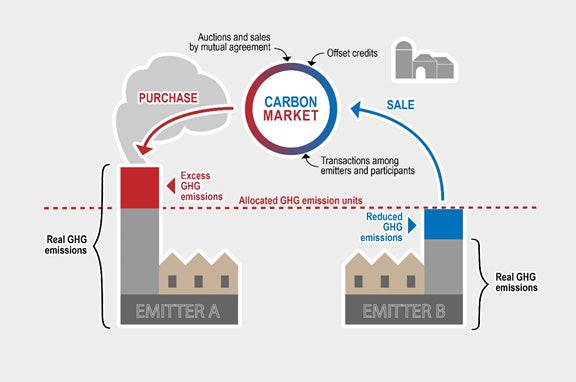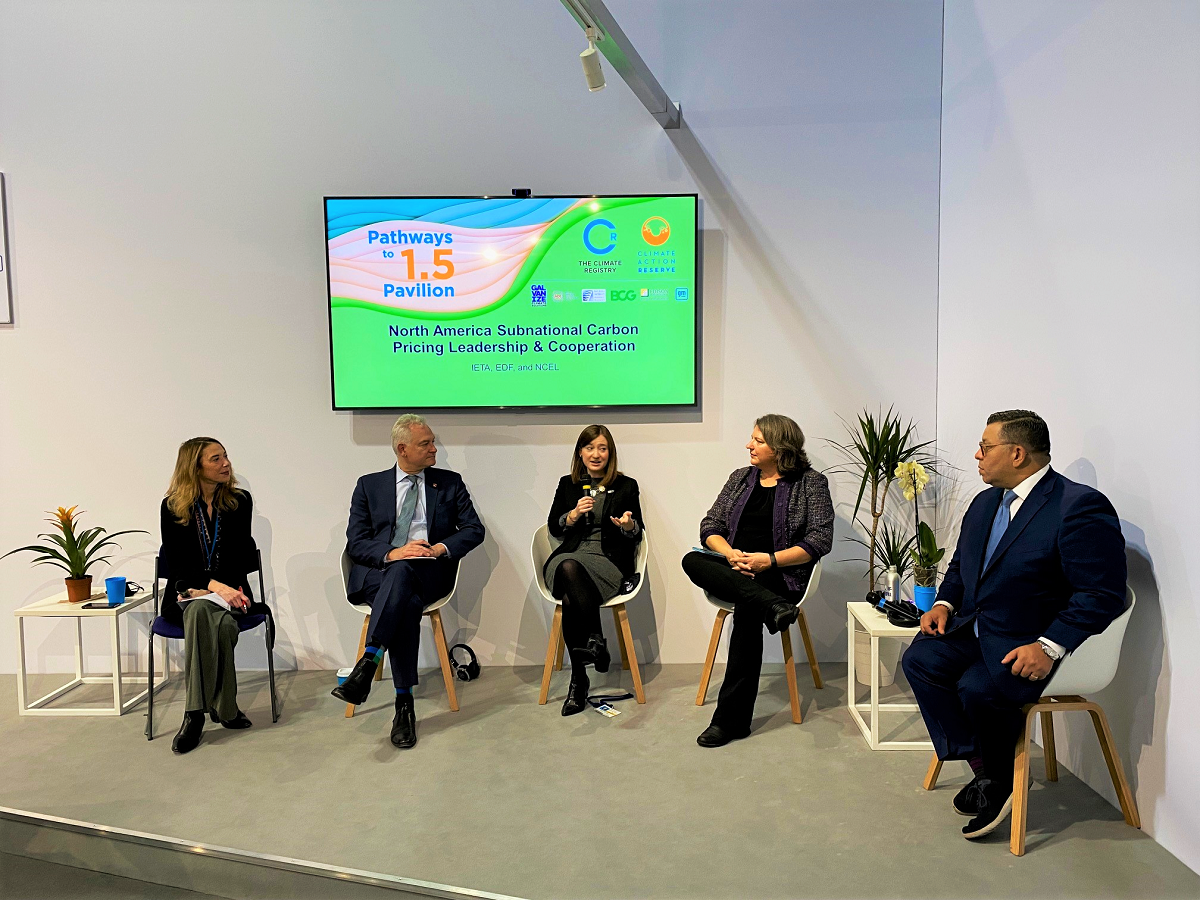Why linking carbon markets boosts climate and economic benefits for US states
This post was co-authored by Natalie Hurd, Western states climate policy intern at EDF.

The Supreme Court’s recent ruling to constrain EPA’s ability to limit climate pollution from existing power plants took away a critical tool to fight climate change at the federal level, making state-level action more important than ever. On the West Coast of the U.S., where states have been stepping up as climate leaders, the impacts of climate change are ever more severe and apparent, with scientists warning of a global wildfire crisis and finding that the West’s current megadrought is the worst in over 1,200 years. It is painfully apparent that states need to use – and strengthen – every tool at their disposal to reduce climate pollution now.
Even states that have put – or are in the process of putting – in place economy-wide pollution limits alongside a price on carbon, like California and Washington state, can scale up action by linking their programs with other states or jurisdictions. Here’s how states can make the most of linking their programs – and the major benefits it can bring.
How cap-and-invest works
One of the most important policy tools to fight climate change at the pace and scale required is a firm, declining limit on climate pollution, paired with a price on carbon. A well-designed limit provides the greatest certainty of meeting science-based emissions goals and gives regulators an enforceable tool for requiring reductions in climate pollution, while a price on carbon provides a continuous signal to cut emissions. The revenue from the carbon price can be reinvested in overburdened communities and put towards achieving further pollution reductions. Together, these strategies can be referred to as a “cap-and-invest” program.
These kinds of programs are not the only policies that need to be implemented to address the climate crisis; they are a key part of a vital suite of policy solutions, including sectoral strategies to deliver near-term reductions in climate pollution. It is also critical that policymakers work meaningfully with communities to ensure that these policies are designed and deployed in a just and equitable way, explicitly addressing the disproportionate burden of climate pollution which is primarily borne by low-income communities and communities of color. While cap-and-invest programs are only part of the solution, making them as strong and as stable as possible will help facilitate more ambitious and broad climate action for decades to come.
These programs, such as California’s cap-and-trade system which was launched in 2013, or Washington’s ambitious cap-and-invest program which will begin in 2023, can fill many important needs in the fight against climate change simultaneously; incentivizing early reductions that minimize the cumulative build-up of climate pollution, generating revenue for climate adaptation and mitigation efforts, and creating a backstop to ensure that a state achieves its emissions goals in the event that other policies fall short. By linking systems and creating a broader unified carbon market across jurisdictions, states can see even greater environmental benefits and achieve ambitious emission reduction goals consistent with what scientists say is needed to avoid the worst impacts of climate change.

Unpacking linkage and how it boosts the benefits of cap-and-invest
“Linkage” refers to connecting carbon pricing systems like cap-and-trade or cap-and-invest across borders, whether those borders are state or national. In the linked system between California and Quebec, for example, emissions allowances, representing one tonne of greenhouse gas emissions, issued by California can be purchased and used by emitting entities in Quebec, and vice versa. Similarly, the Regional Greenhouse Gas Initiative links 12 different states in the Northeast and Mid-Atlantic to cap and reduce carbon pollution from power plants.
Linking programs can generate three major benefits:
1. Lowering the cost of entry
Washington’s Department of Ecology recently published an economic analysis modeled by Vivid Economics, which examined the potential outcome of linking markets between Washington and California. Vivid’s modeling shows that if market participants had certainty that the program would link with California’s program by 2025, the result is a significant drop in the initial Washington allowance prices. This is compared to a market in which linkage wasn’t a possibility – with initial allowance prices dropping 30% from $58.31 in a program without linkage to $40.74 in a program with linkage to California.
Lower costs make the market more accessible for facilities, and therefore, easier for regulators to set and achieve greater reduction targets. In other words, lower costs can lead to greater ambition. One 2021 study showed that the reinvestment of cost savings from linked systems could allow jurisdictions to double their emissions reductions by 2030.
By making it less expensive for entities to comply with the program, linkage can mean that the costs of consumer goods, energy and of the overall economic transition are lower. This benefits consumers and households — and by reducing the burden of climate action for individuals, linkage can help build and sustain support for further action.
Greater ambition in climate policy is urgently required in order to meet the emissions goals set at state and national levels, and linkage can facilitate deeper and swifter reductions in climate pollution.
2. Building confidence in the system and in meeting climate goals
When carbon markets link up, the larger cap-and-invest style program can be more efficient and more stable. With one common carbon price across jurisdictions, liquidity is increased – meaning there is always a trading partner available to buy or sell allowances. This can help to reduce price fluctuations and insulate the market from price shocks, so that if prices are high, they are predictably high.
More stable prices mean greater predictability and confidence in the system, which supports greater certainty of meeting climate goals. Linkage with other systems can reduce the economic burden to individual jurisdictions; as seen when California and Quebec linked, the program linkage was able to deliver greater regional emissions reductions at lower costs than either jurisdiction would have achieved alone.
3. Allowing smaller states or jurisdictions to have a big impact
Linking multiple carbon trading programs also creates the opportunity for participation by smaller jurisdictions or jurisdictions where the economic framework for an independent system is not feasible. By making cap-and-invest a viable policy option where an independent system would not have been politically or economically feasible, linkage can expand the reach of climate policy and facilitate ambitious climate pollution reductions in places that otherwise would not have participated in such a program. As these programs spread and link together, the risks and costs lower for all states and jurisdictions involved. This can also build national momentum on climate action, lowering the barrier to entry for states and jurisdictions to join the fight against climate change.
As more states and jurisdictions consider launching their own carbon markets, such as Washington state’s cap-and-invest program, they should consider the major advantages of designing programs that can be linked together. By setting similar levels of ambition and environmental integrity in their programs, states can preserve the possibility to link systems once they are operational. In doing so, states will be setting themselves up to achieve the greatest level of climate ambition at a time when it’s so critically needed.













One Comment
Why banking on carbon markets is the wrong climate action strategy….there are better, faster, more fair ways to price emissions. #climateincentive